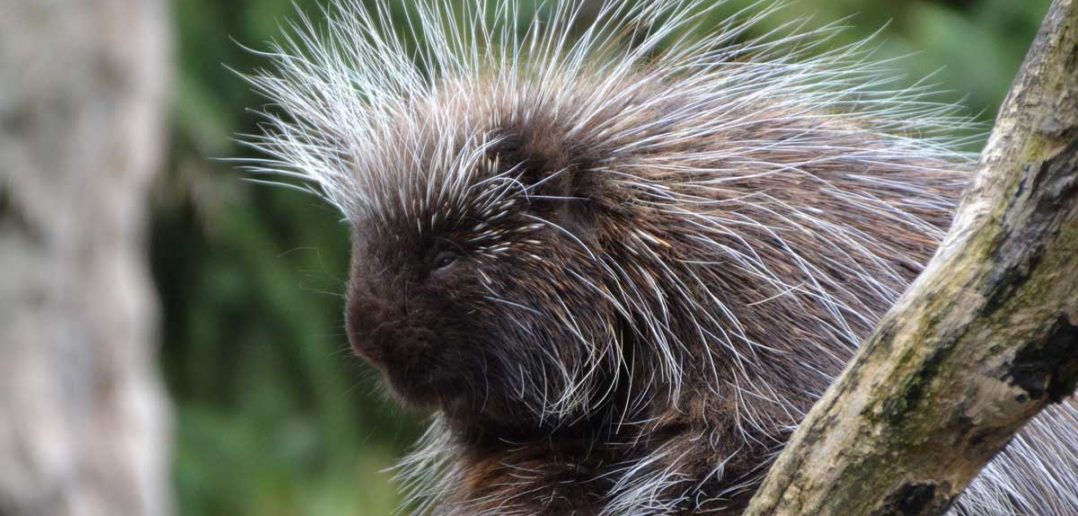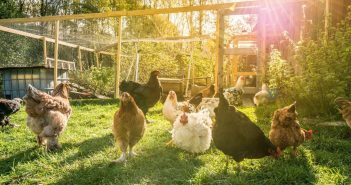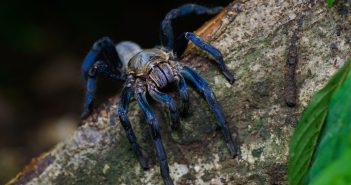You know the emails you sometimes get that have been passed around from friend to friend? I received one from a dear friend that featured the Fable of the Porcupine. I’d never heard the fable before and didn’t know much about porcupines, so thought I’d share the email version of the fable, the origin of the story, and a little bit about porcupines here.
The Email Version of the Porcupine Fable:
It was the coldest winter ever – many animals died because of the cold. The porcupines, realizing the situation, decided to group together. This way they covered and protected themselves; but the quills of each one wounded their closest companions even though they gave off heat to each other. After a while they decided to distance themselves one from the other and they began to die, alone and frozen. So they had to make a choice: Either accept the quills of their companions or disappear from the Earth.
Wisely, they decided to go back to being together. This way they learned to live with the little wounds that were caused by the close relationship with their companions, but the most important part of it, was the heat that came from the others. This way they were able to survive. Moral of the story: The best relationship is not the one that brings together perfect people, but the best is when each individual learns to live with the imperfections of others and can admire the other person’s good qualities. Or perhaps the moral of this emailed version is all about living with pricks. 😛
Origin of the Porcupine Fable:
The concept originates in the following parable from the German philosopher Arthur Schopenhauer‘s Parerga und Paralipomena, Volume II (Chapter XXXI. Similies, Parables, and Fables)
On a cold winter’s day a community of porcupines huddled very close together to protect themselves from freezing through their mutual warmth. However, they soon felt one another’s quills, which then forced them apart. Now when the need for warmth brought them closer together again, that second drawback repeated itself so that they were tossed back and forth between both kinds of suffering until they discovered a moderate distance from one another, at which they could best endure the situation. – This is how the need for society, arising from the emptiness and monotony of our own inner selves, drives people together; but their numerous repulsive qualities and unbearable flaws push them apart once again. The middle distance they finally discover and at which a 691 coexistence is possible is courtesy and good manners. In England, anyone who does not stay at this distance is told: ‘Keep your distance!’ – Of course by means of this the need for mutual warmth is only partially satisfied, but in exchange the prick of the quills is not felt. – Yet whoever has a lot of his own inner warmth prefers to stay away from society in order neither to cause trouble nor to receive it.
A Bit About Porcupines
Of course National Geographic has a wonderfully informative page devoted to the porcupine. We all know that they are a prickly rodent, but did you know the Latin name means QUILL PIG? There are about two dozen species that all have a coat of needle-like quills. Considering there are only two species of beaver, twenty-four porcupine species surprised me.
A porcupine has soft hair that is mixed with sharp quills on its back, sides, and tail. The quills usually lie flat until the porcupine is threatened. And while the quills detach easily when touched, they do not actually shoot out as once thought.
Still, it’s never a good idea to threaten a porcupine! An encounter with a threatened porcupine may leave humans and animals with embedded quills that are difficult to remove. The quills will grow again to replace the lost ones. There can be as many as 30,000 quills on a porcupine.
The average life span of a porcupine is 5 to 7 years. There head and body is 25 to 36 inches, and the tail 8 to 10 inches. The weight can be from 12 to 35 pounds. A litter is between one and four. Babies are born with soft quills which harden in a few days. Within two months the young porcupines are ready to live on their own.
Do Porcupines Make Good Pets?
In general, we don’t love the idea of keeping wild animals as pets, though we do think they are always exceptions for the right animal and the right person and the right condition. It does happen, we found several instances of pet porcupines online . . .
A porcupine who thinks it’s a puppy! This 5 year-old porcupine was someone’s pet. He is romping around in circles and jumping in a desperate puppy-like plea for attention, even dropping onto his back for belly rubs.
The Huffington Post shared that video but also stated that at HuffPost Green they in no way condone keeping wild animals as pets. We concur, HuffPost.
Another “pet porcupine” story told of a little baby weighing about one pound sitting out in a field all alone. The people who found him wrapped him in a jacket and brought him home. Their only intent was to nurse him back to health, fatten him up a bit, and then take him back to where they found him. The story was posted about 34 months ago, at that time he was almost a year old, ten pounds, and a spoiled porcupine who was named Spike.
According to the owners he is a wonderful pet, very affectionate and loves everybody. His favorite friends are their two dogs and three cats. He interacts and plays with all of them like any other pet would. He is a lot of fun to have around and enjoys being petted. Spike has no idea what a threat is so therefore always has his quills down. Although he is nocturnal, he likes to be awake when people are.
People have been known to have skunks, opossums, raccoons, monkeys, and many other wild animals as pets. It really does depend on the person, the animal, and the situation but we certainly don’t recommend going out in search of a porcupine for a pet. If you’re into the look of a prickly pal, consider a hedgehog instead.





8 Comments
Hello, I recently came accross your blog and have been reading along your posts. I decided I will leave my first comment. I have enjoyed reading your blog. Nice blog. I will keep visiting this blog very often…
I am very thankful to you. In fact your creative writing abilities has inspired me to start my own BlogEngine blog now. Really the blogging is spreading its wings rapidly. Keep up the good work.
I love the story but the photo at the top is of a hedgehog
The pictures are of a hedgehog, not a porcupine. Quills don’t injure like a porcupine, but the story is wonderful.
Ah! So the picture we included is of a hedge hog! That makes sense.
The image from the email was SO cute that we really wanted to include it on the blog post. So we did a quick search on TinEye, found 68 results, and figured if the photo was circulating in emails and on several websites it would probably be safe to include it here, too. But we never thought it wasn’t a baby porcupine!
Maybe one of these places is the origin of the photo.
http://idrilanwamane.canalblog.com/archives/2009/07/01/14266450.html
http://www.flickr.com/photos/fleli/3660867798/
One’s a photo on flickr and one’s part of a blog post that has several images that look like there were taken at the same time (though the date is a much later than the flickr photo).
Looks like we’d better go and find a baby porcupine, even though that email picture was too cute.
Thank you for the heads up, readers!!
I appreciate the fable. Is it native american? It strikes me as Native American Lore: I love the moral.
great story, loved it.
Hey there! I could have sworn I’ve been to this website before but after reading through some of the post I realized it’s new to me. Nonetheless, I’m definitely delighted I found it and I’ll be book-marking and checking back often!